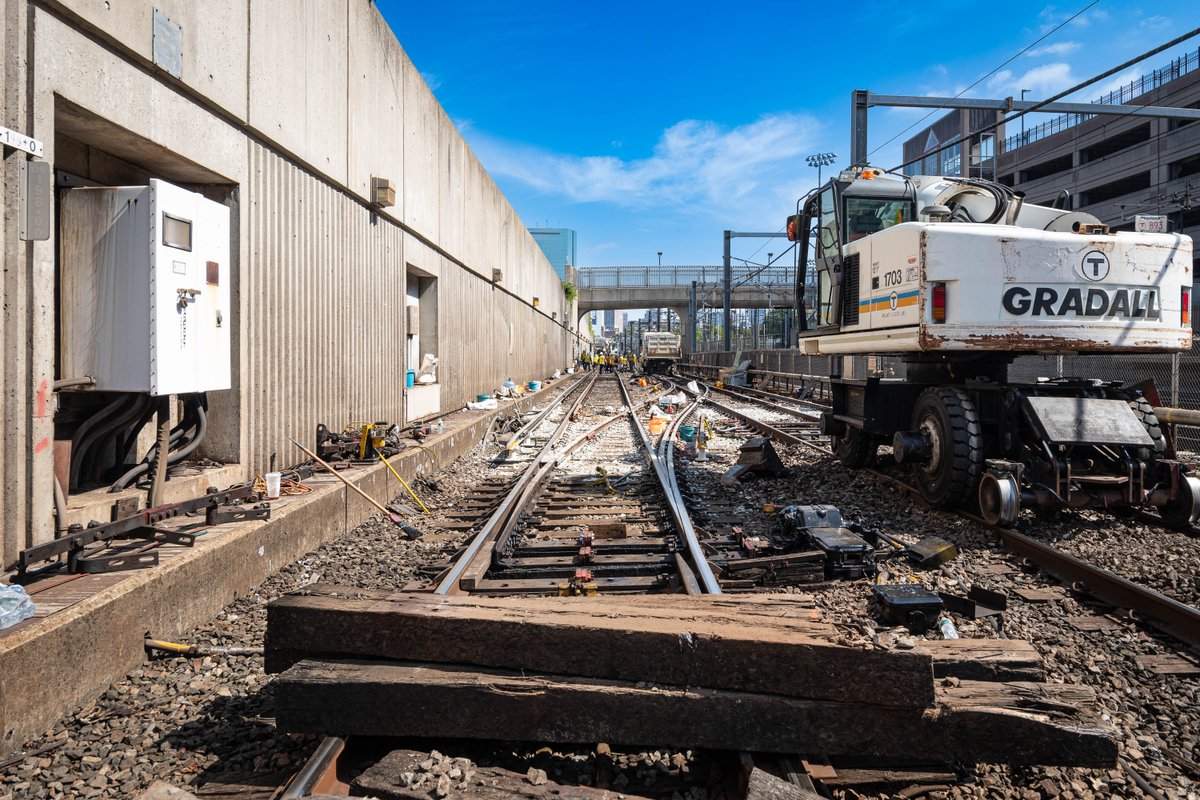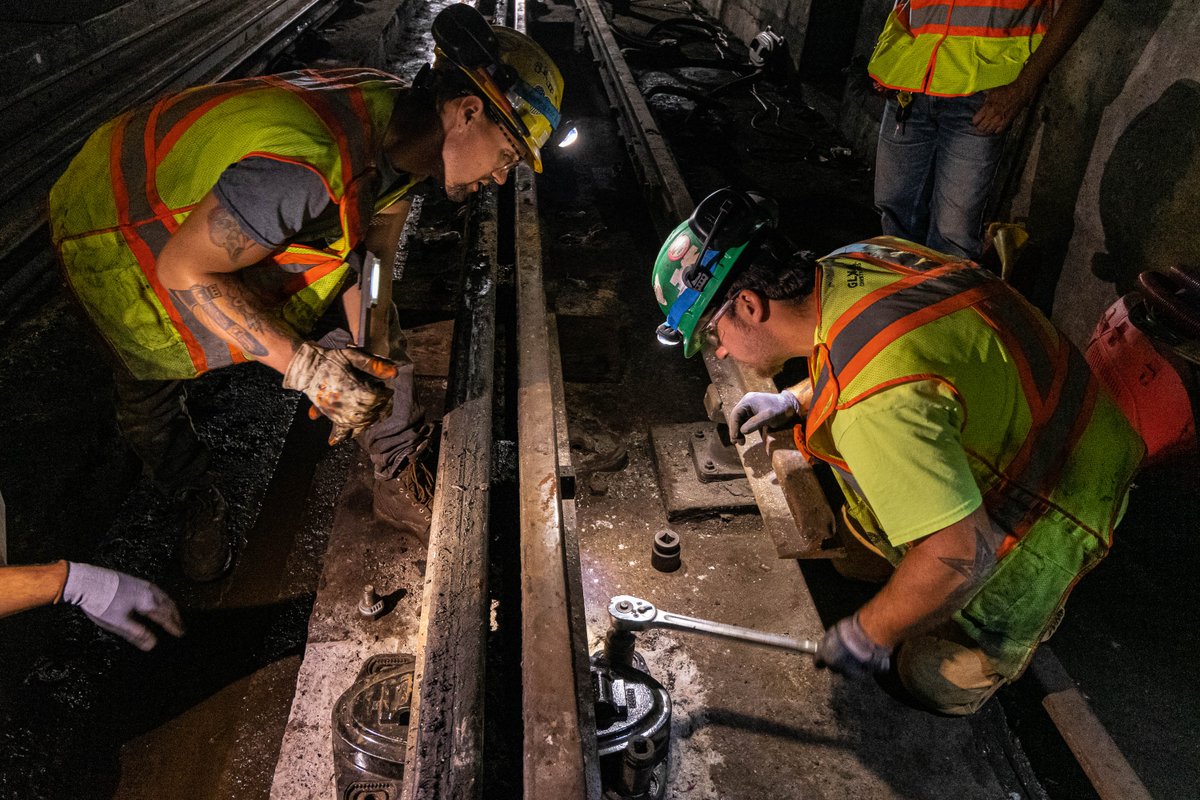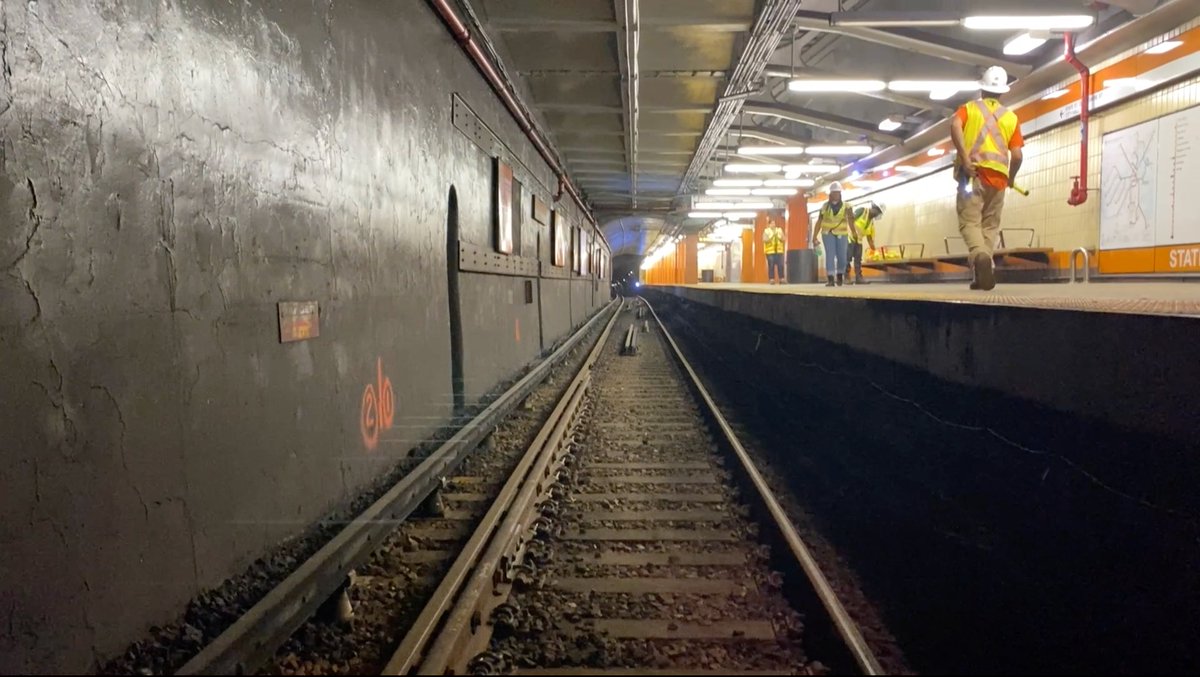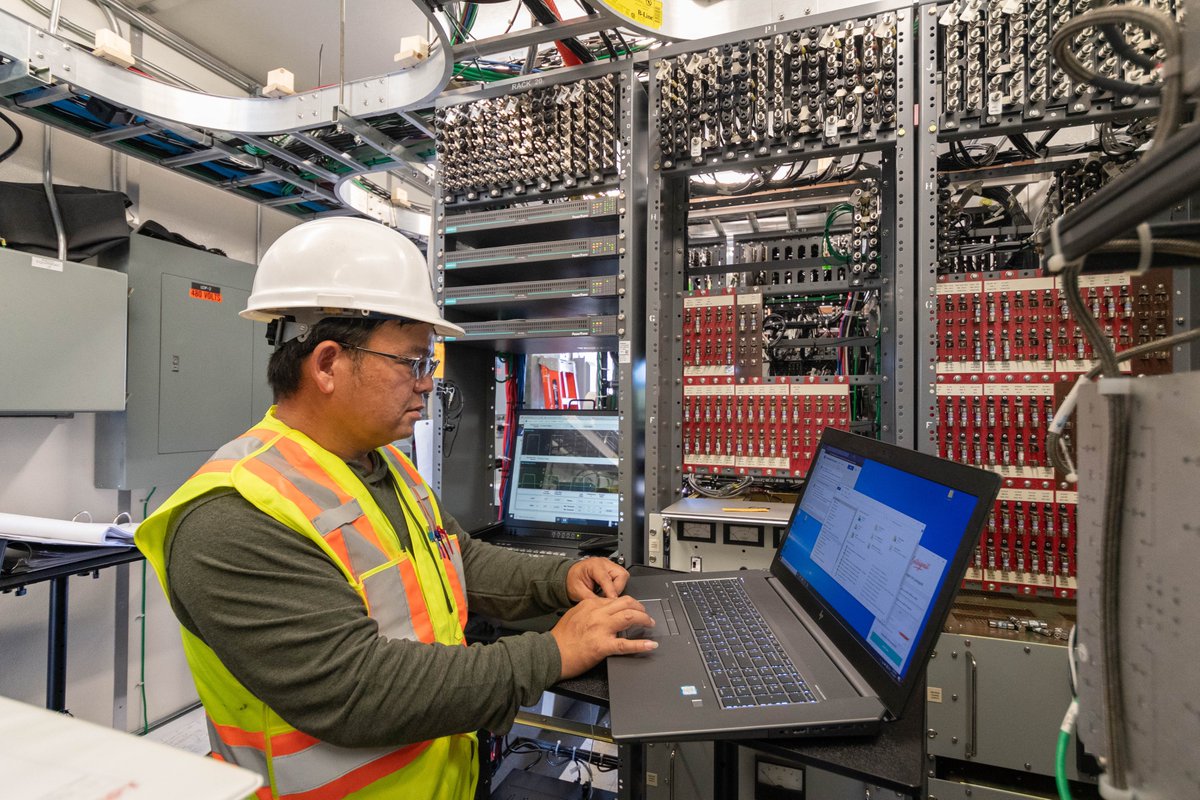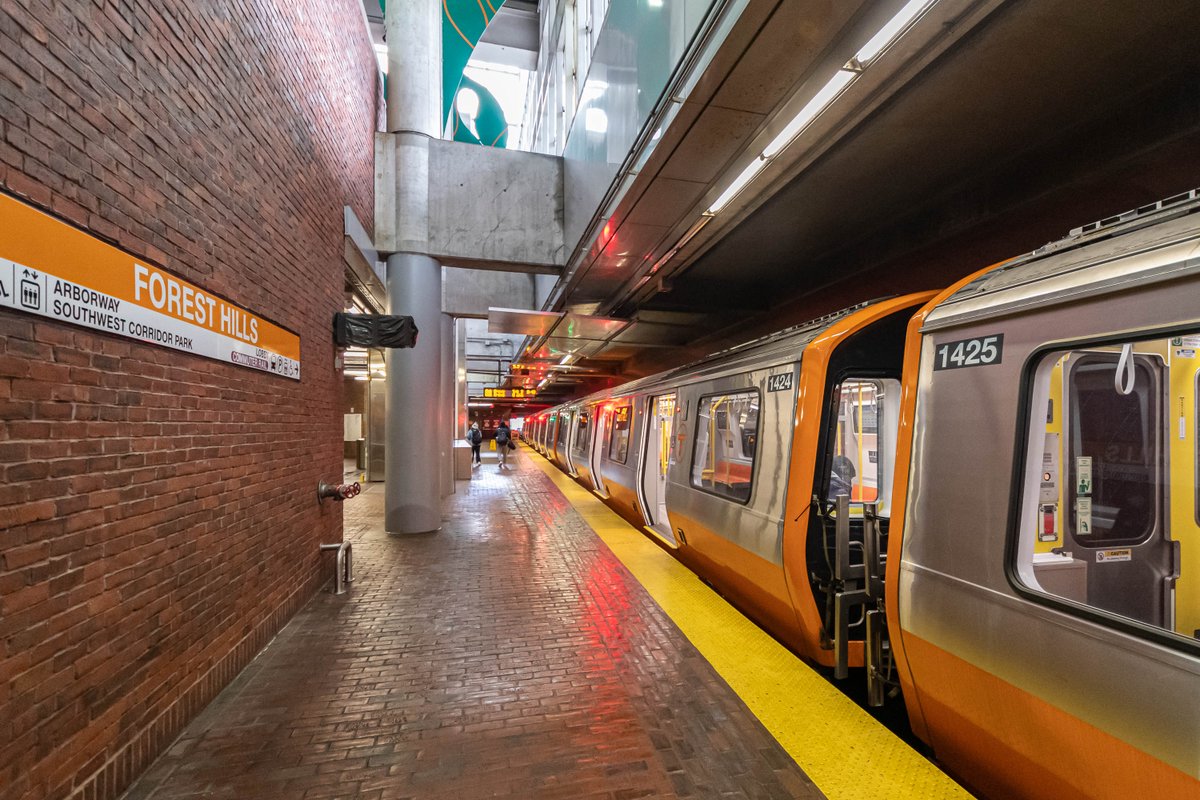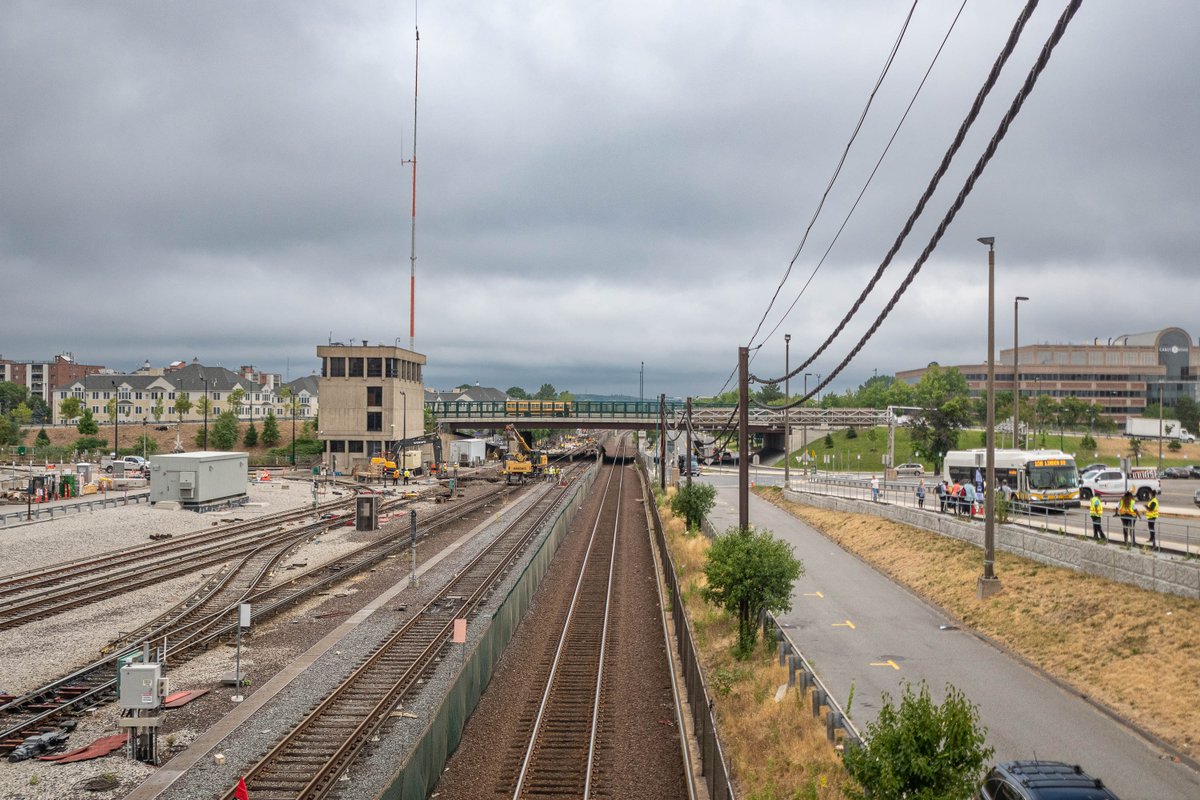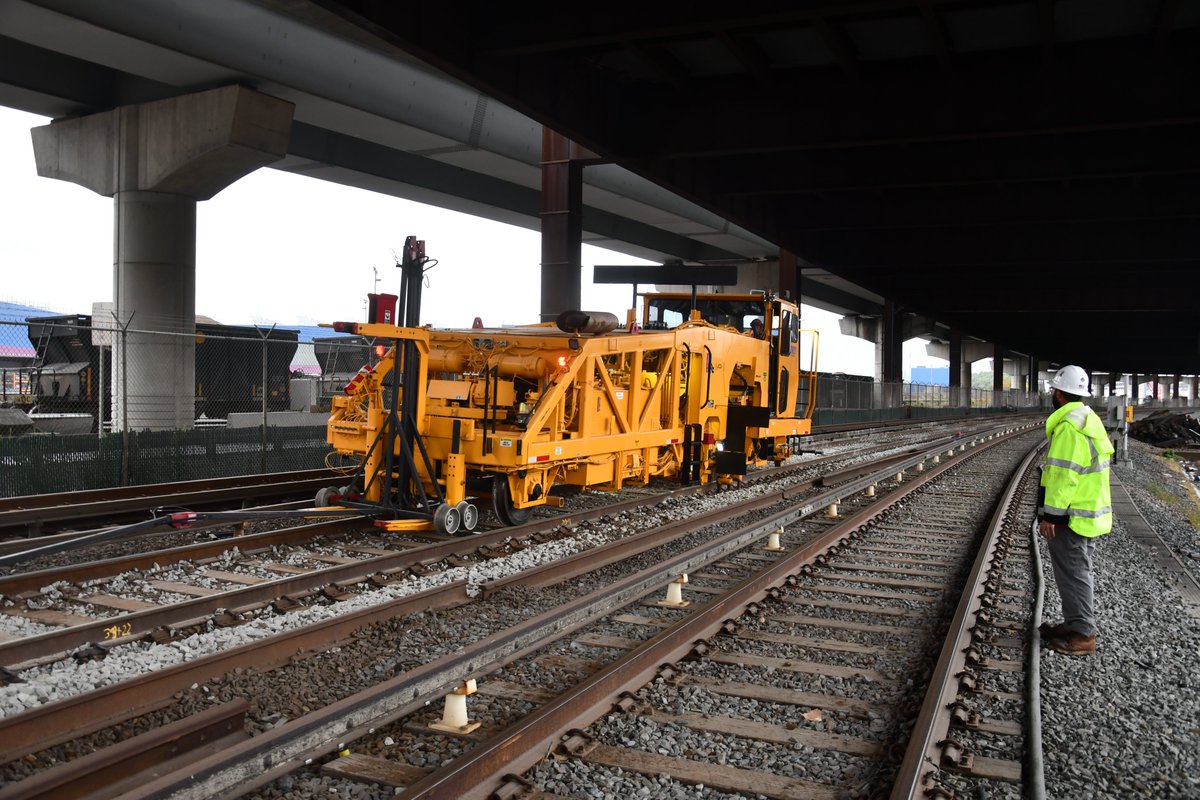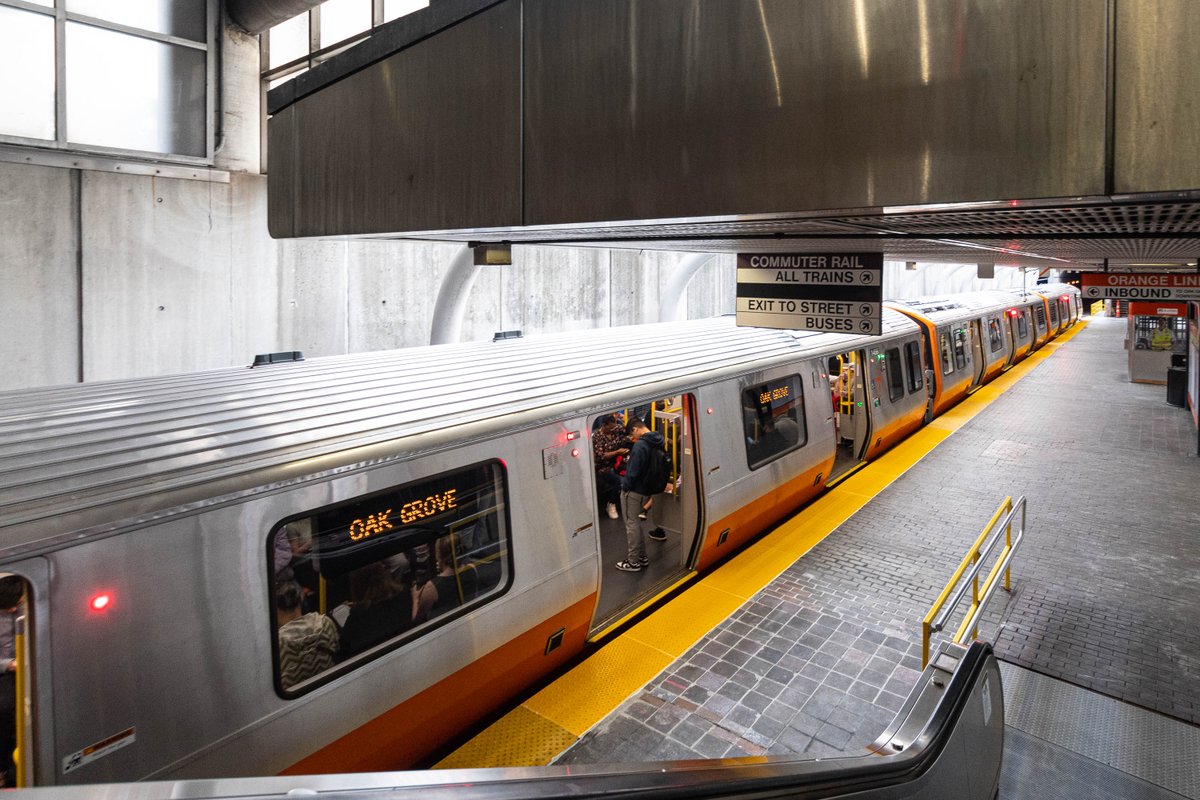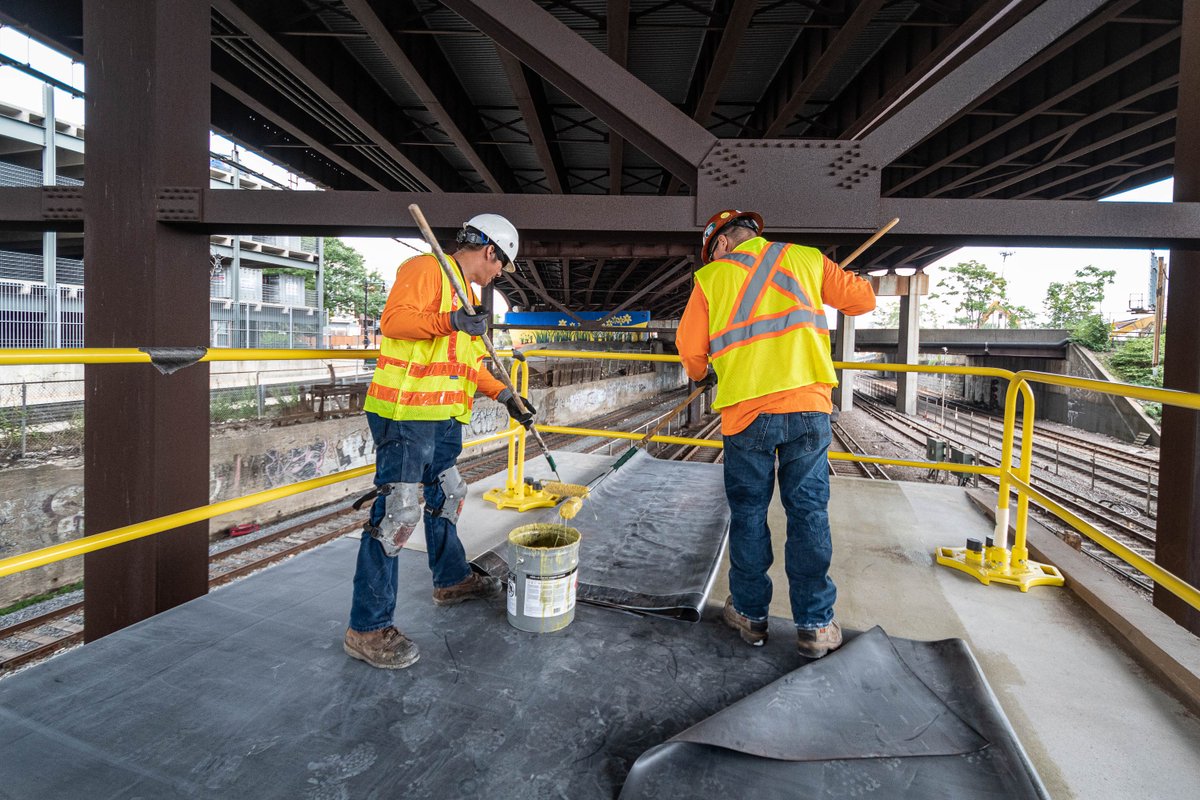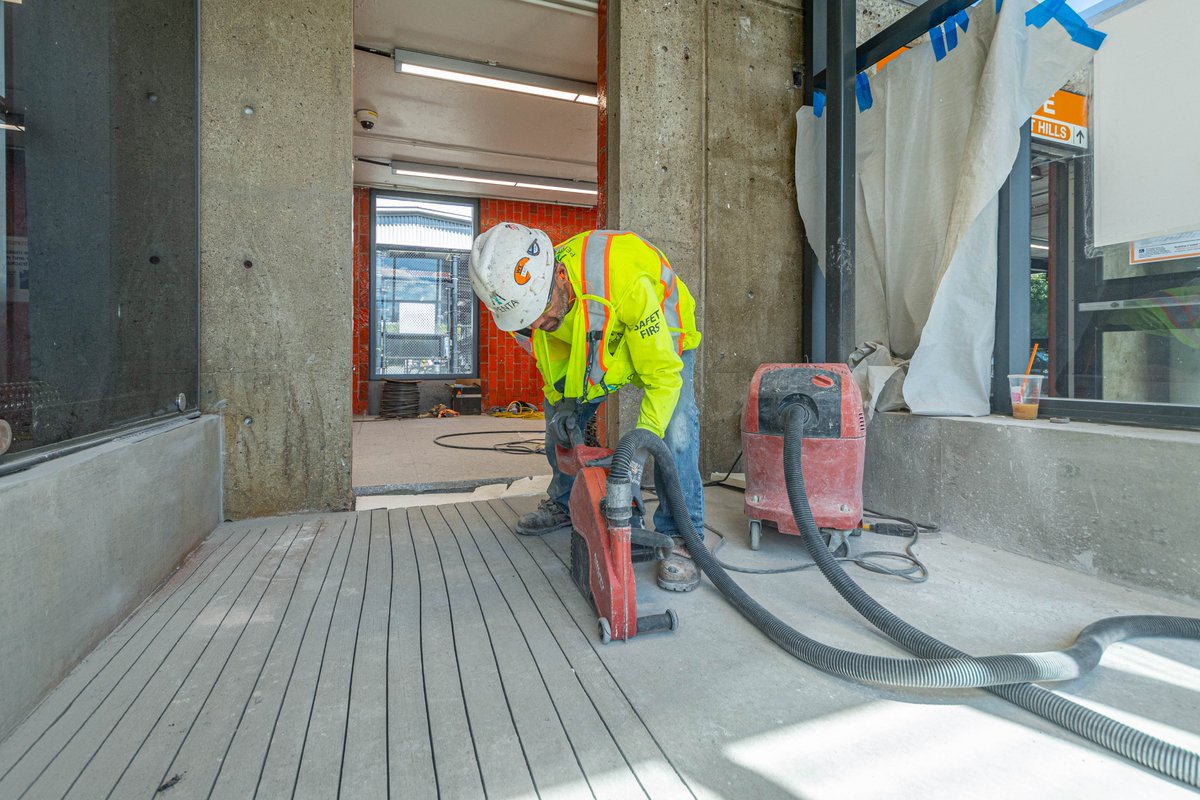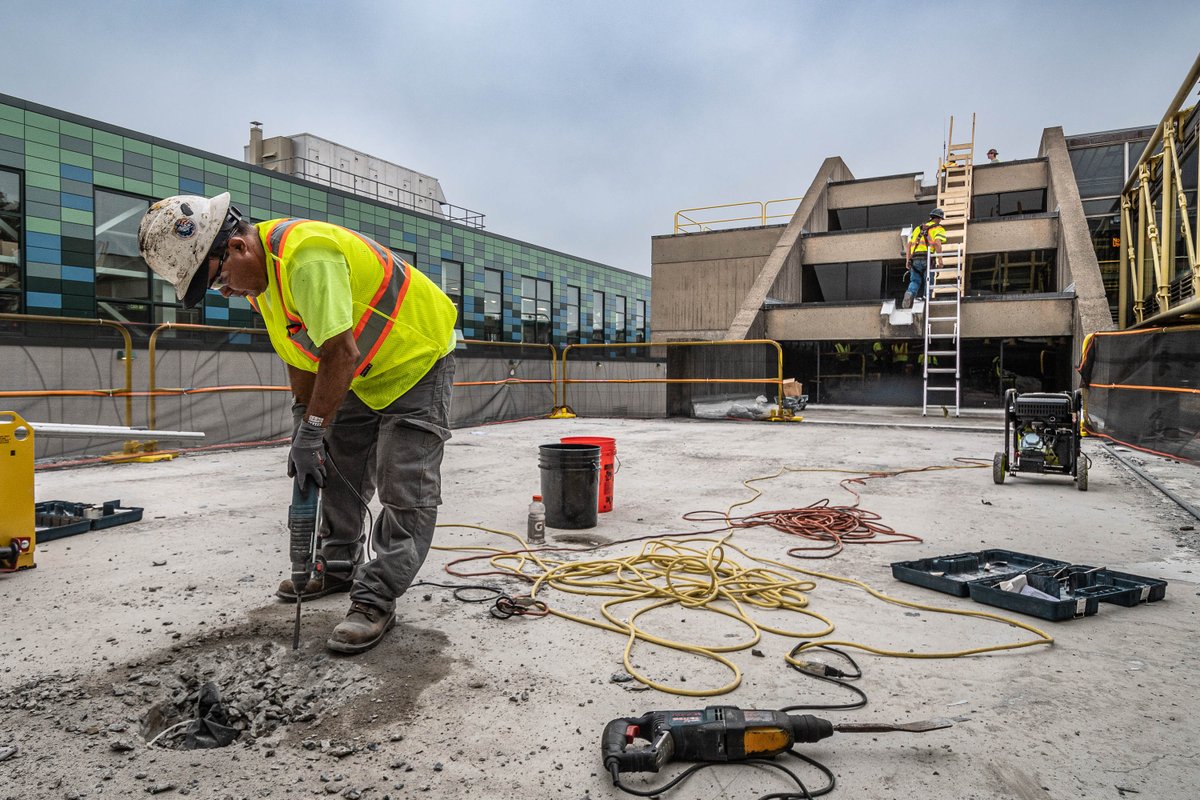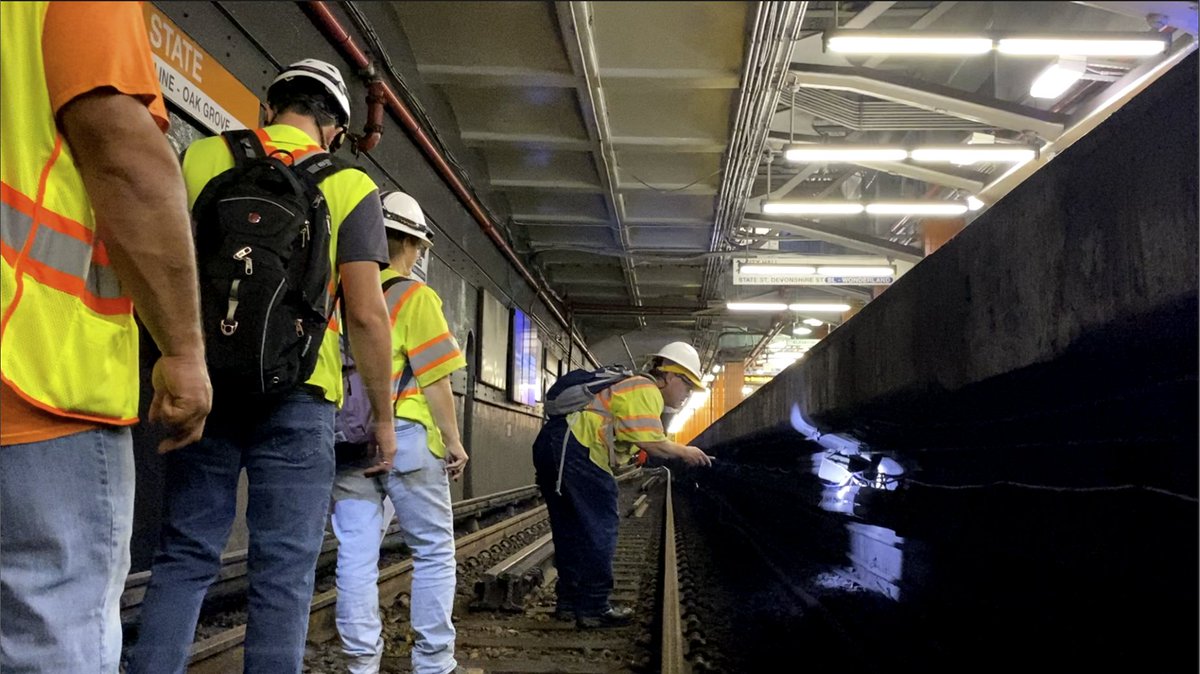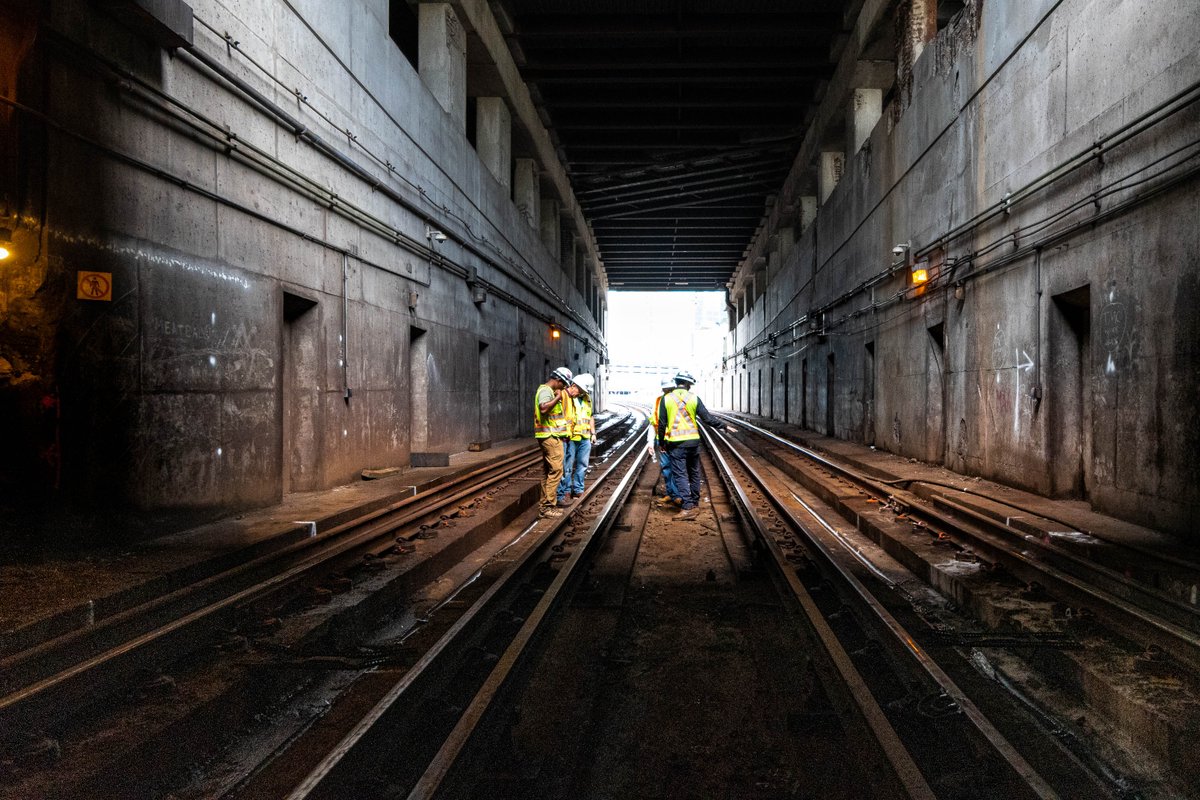Over the course of 30 days, we completed 41 projects across the Orange Line for #BuildingABetterT. Ranging from large track upgrades to smaller inspection work, these projects help to renew infrastructure and provide a better rider experience. With full, uninterrupted access we:
In the tunnels at Tufts Medical Center, we replaced 400 Cologne eggs - specialized rail fasteners that dampen noise & vibrations - to protect the hospital above. We also installed 1,086ft of new rail to eliminate a long-standing slow zone, allowing for faster service in the area.
Between State & Downtown Crossing, we replaced 858 feet of rail to remove the first of 6 speed restrictions on the Orange Line. With new rails, we can increase track speeds so trains can run faster and more efficiently while renewing the service life of our infrastructure.
Between Oak Grove & Malden Center, we upgraded our signal system transitioning from the old relay signals to a modern digital system. With updated technology comes greater service reliability, lower maintenance with new equipment & more efficient communication through the system.
Our vehicle engineering & maintenance crews aimed to prep 60 new Orange Line cars for service but were able to ready an extra 12 cars. With 72 new cars available, the Orange Line will predominately be made up of new trains with increased capacity & #TAccess + better operations.
Between Wellington and the North Station portal, we installed 4,356 feet of new rail for a safer, smoother ride that also helped to eliminate 3 slow zones in the area. We also replaced 2,086 wooden rail ties that hold that rails in place and help distribute the train's weight.
Around Wellington, we replaced 7,200 feet of rail and 550 wooden ties, laid new ballast, and installed two track crossovers. These improvements allow for more streamlined operations in and out of the Wellington Yard - a critical point for providing optimal Orange Line service.
To further enhance our track safety and quality, tracks between Community College and Assembly underwent a process called 'surface, line, and tamp.' This process ensures that the tracks are in proper alignment with the correct spacing and are level for a smooth, efficient ride.
In all, we replaced 20 special trackwork units, including crossovers at Ruggles, Jackson Square & Forest Hills. These complex sections are key to Orange Line operations, moving trains quickly, effectively from one track to another. This work also removed a slow zone at Jackson.
At Back Bay, we replaced 500 feet of rail and 74 wooden rail ties for a renewed service life with greater reliability and safety, plus a smoother train ride.
In the station, we surveyed the ceilings, platforms, and lighting to support plans for future wayfinding improvements.
Along with priority projects, we completed opportunity projects that are critical to maintaining & improving our infrastructure. Between Ruggles & Forest Hills, we replaced the tactile edges along the platforms. These raised yellow strips are essential for safety & accessibility.
Between Back Bay & Forest Hills, we laid 48,000ft of new signal cable to prepare for the future transition to the digital signal system. This initial work will allow us to activate and cut over to the new signal system, as we already did at Oak Grove and Malden Center, in 2023.
At Sullivan Square, we renovated the station's canopies by replacing the roof drains & weatherproofing membrane to protect the station from the weather & roadway above. While structural repairs were completed in 2021, these final steps were accomplished thanks to this diversion.
At Oak Grove, we accelerated ongoing #TAccess upgrades, including renovating elevators, new terrazzo flooring, stairs, a skylight, doors and lighting for a better, more accessible rider experience. We also replaced the rub rails that protect both the platforms & trains from wear.
At Wellington, we installed duct banks & a traction power box for third rail power. Running it underground will protect cables & ensure a reliable supply for operations.
We also renewed Wellington's roof with new roof drains & weatherproofing membrane to protect the structure.
At Mass Ave and Jackson Square stations, we performed blackout tests to inspect the stations' generators in case of an emergency and reviewed the stations' emergency lighting. Such tests are critical to the safety and security of our stations and service.
Across the whole of the Orange Line, crews identified, cleaned, repaired, and/or replaced signs along our tracks and tunnels, including emergency exit signs, mile markers, and speed limit signs. Each sign is essential for ensuring personnel safety and providing operational info.
At State Street station, we took concrete core samples at the Milk Street lobby for a future station improvements project. This inspection work will help inform us as to what work will be required to support the planned accessibility upgrades including new floors and elevator.
Between North Station and State, we inspected conduits to confirm that they can support new electrical cables for future station upgrades at North Station. We also updated North Station's 15-year-old security camera system for enhanced monitoring and safety within the station.
At Chinatown, we took concrete core samples from the Essex lobby to analyze its condition to potentially reactivate station entrances.
Between Chinatown & State, we inspected conduits to see if they can support future electrical cables for planned station projects at Chinatown.
At Orange Line stations, we made interior & exterior repairs that improve the rider experience. This work included replacing tactile strips, concrete platform repairs, fixing tripping hazards, new lighting, bench renewals, new signs, replacing stair treads, painting & cleaning.
Across the whole of the Orange Line, we inspected transit bridges, retaining walls, and tunnels to review each's structural condition. Analyzing each structure is vital to maintaining the safety of our system and helps us to identify where future investments are needed.
At Ruggles, we inspected duct banks for Phase II of the Ruggles Station Improvements Project. We used ground-penetrating radar to inform station designs.
At Jackson, we performed inspections to confirm the cause of tunnel leaks so we can develop plans on how best to address it.
At Tufts, we replaced the old standpipe fire suppression system with a new state-of-the-art system that covers the entire station. This work is difficult to do in the overnight/weekend window, but the diversion allowed us to get this essential work done for the safety our system.
Along the Orange Line, we vacuumed out catch basins and 1,000+ feet of drainage troughs and pipes. During large storms, these pipes and basins are key to moving stormwater away from our tracks, helping to prevent flooding and protecting our infrastructure and service.

MBTA
@MBTA
The official Twitter feed of the Massachusetts Bay Transportation Authority (MBTA). Check out our partners @MBTA_CR and @MBTATransitPD. Emergency dial 911.
Missing some tweets in this thread? Or failed to load images or videos? You can try to .

